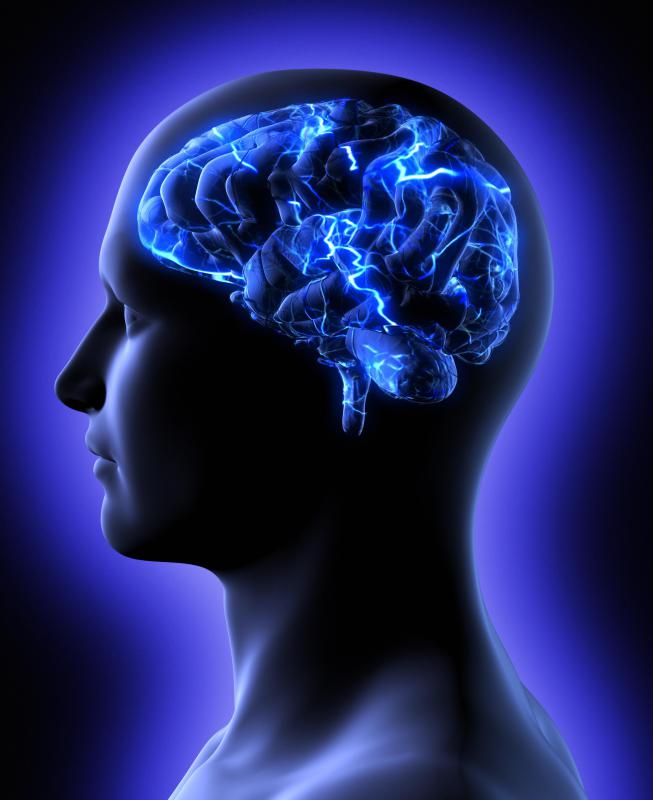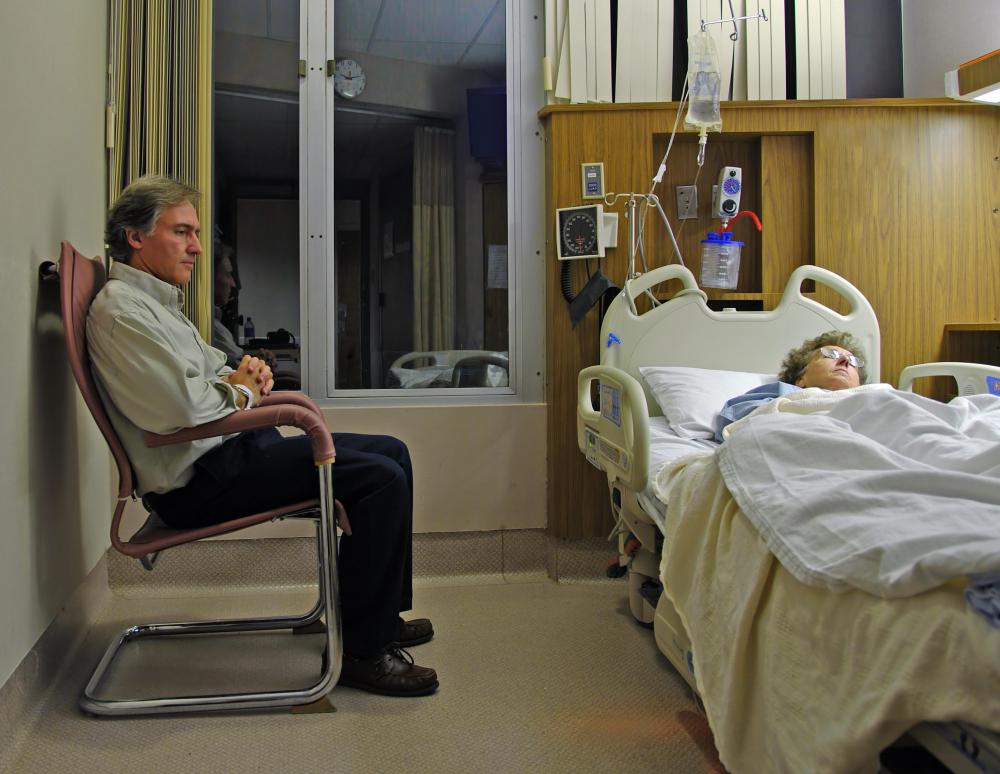At WiseGEEK, we're committed to delivering accurate, trustworthy information. Our expert-authored content is rigorously fact-checked and sourced from credible authorities. Discover how we uphold the highest standards in providing you with reliable knowledge.
What is an Electroencephalography?
In electroencephalography, electrodes are used to detect electrical activity in the brain. The electrical activity detected by the electrodes is recorded and converted into a format that can be examined by a doctor. The most common use of an electroencephalogram (EEG) is to diagnose epilepsy. Electroencephalography can also be used to evaluate brain injuries, diagnose coma states and determine whether a person who has suffered serious brain trauma and is suspected of being brain dead has any chance of recovery.
Electrical activity in the brain is produced by neurons firing as they transmit information. These cells emit electrical activity because they transmit information via a process called electrochemical signaling, in which the charge of cell membranes is temporarily altered. As neurons fire, they emit patterns of electrical energy that change depending on the type of stimuli the brain receives and on how the brain reacts to the stimuli. Certain types of injuries or diseases cause the brain to emit different types of brainwaves or less electrical activity altogether. A doctor can therefore read an electroencephalogram and make a diagnosis on the basis of the electrical activity that has been recorded, in addition to results from other types of tests.

The typical electroencephalography procedure takes approximately one hour to complete. During the test, a patient sits or lies down while brain activity is recorded. Brain activity is recorded by approximately 20 electrodes, which are attached to the scalp with a special type of glue. The electrodes also are coated with a gel that improves their ability to pick up electrical activity. The test is painless and largely risk-free. The main risk is of someone having a seizure, which is actually a desired effect because it aids the diagnosis of epileptic conditions.

Other types of electroencephalography take longer to complete. In a sleep EEG, electrical activity is recorded for two to three hours while the patient is sleeping. In an ambulatory EEG, the patient is fitted with a portable EEG recorder and is allowed to go home. Electrical activity is recorded for up to 24 hours while the patient takes part in his or her normal daily activities.

To prepare for an EEG, a patient might be asked to avoid caffeine for one or two days before the test in order to avoid the stimulating qualities of this substance. In addition, hair products such as gel, hairspray or wax, should not be used on the day of an EEG, because these products can interfere with the application of electrodes. Someone who is undergoing sleep electroencephalography might be asked to remain awake the night before, to help them fall asleep more easily during the test.

Someone who is scheduled to undergo electroencephalography for epilepsy diagnosis might be asked by his or her doctor to stop taking antidepressants or antiseizure medications for one or two days before the test. This is because stopping the medications increases the likelihood that a seizure will occur during the EEG. In addition, the patient might be exposed to seizure-inducing stimuli such as flashing lights. These measures are taken because the objective of the EEG is to evaluate brain activity during a seizure episode.
AS FEATURED ON:
AS FEATURED ON:















Discussion Comments
what's the best way to remove the special glue used for an EEG?
Post your comments